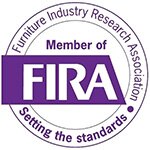
A bright future for the smart office
Smart office technology is predicted to boom as an essential part of creating a safe, inclusive, efficient and productive environment. Information gathered on hybrid-working patterns will inform future workspace design and the way in which it’s managed.
The global smart building market is projected to grow from $67.60 billion in 2021 to $265.37 billion in 2028 at a compound annual growth rate of 21.6%
What is a Smart Office?
Smart offices use technological solutions to monitor, manage and improve the workplace environment. Evidence based decisions can improve energy efficiency, create a healthy working environment, and reduce costs.
Capturing data provides a constantly updated picture of the way in which workspace is used. Responding to the data, offices can be designed and managed to better reflect the needs of the business and employees.
What are the Benefits of a Smart Office?
Productivity
Data captured can be used to optimise the workplace. Reallocating under-utilised space or identifying when meeting rooms are booked but not used — for example — assists in matching spaces to tasks. Better management ensures teams have access to the most appropriate office spaces e.g., hot desking or meeting pods, when they’re needed. With the information obtained, facilities managers can schedule cleaning and maintenance at quiet times to limit disruption.
Collaboration
Technology has become a crucial tool in maintaining communication with so many opting for hybrid working. Increasingly digital whiteboards, zoom breakout rooms and even compact video systems for desks are becoming the norm. Scheduling a meeting, even with a large team is simplified and can be done from home via an app. Facilitating connection between office based, remote workers and even different time zones allows a dispersed workforce to collaborate effectively.

Employee-centric
With intelligent management via apps and sensors, space can be optimised, and user experience improved. Accurate data can be used to improve availability of meeting spaces, pods, zoom rooms, desks etc. It can also help to reduce over-crowding of certain areas, improving comfort.
Employee-friendly features might include smart lockers, package delivery storage, booking a desk with a window, or even a dog-friendly office! In the future expect to see virtual office assistant apps, voice-activated systems and meetings using ‘augmented reality’.
Well-being
Reassuring employees that the workspace is safe and hygienic has become crucial following the pandemic. Touch-less access on entry doors, elevators, lockers, and meeting rooms reduces virus transmission and supports contact tracing. With smart systems ‘social distancing’ can be more effectively managed. Using heat maps, booking systems for desks, meeting rooms, pods etc can ensure no space is too heavily populated.

Many commercial buildings have been designed airtight for energy conservation. Improving wellness and reassuring employees requires better monitoring of air quality through implementing smart solutions.
Smart technology can even provide a customised level of comfort for individuals. Personalisation might include sit-stand automatically adjusting to the user’s settings. Meeting rooms, pods and booths can be set to adjust to individual’s preferred temperature settings.
Convenience
Larger offices can have a confusing layout of floors, meeting rooms, breakout spaces and social spaces. Smart offices provide way-finding systems that helps users navigate around the space. This is particularly helpful for infrequent users or visitors/clients. Visitors to the office can save time by pre-booking a parking space or pre-arranging automated access. Meeting room booking systems and hot desk reservation make it easier for remote workers to optimise their time in the office.
Energy Saving
With increased public awareness, reducing carbon emissions has become an important goal for many businesses. Sustainable practices attract talent, enhance brand reputation, and can be cost efficient. Smart systems help reduce energy consumption by controlling heating and lighting in response to usage and time of day/year.
Asset tagging reduces waste of resources by keeping track of move-able assets across multiple sites and warehouses. Redundant furniture and IT can be ethically and sustainably removed, saving space and potentially recouping value.
If you’re interested to find out more about smart office technology and how it can be integrated into your workplace contact [email protected]



